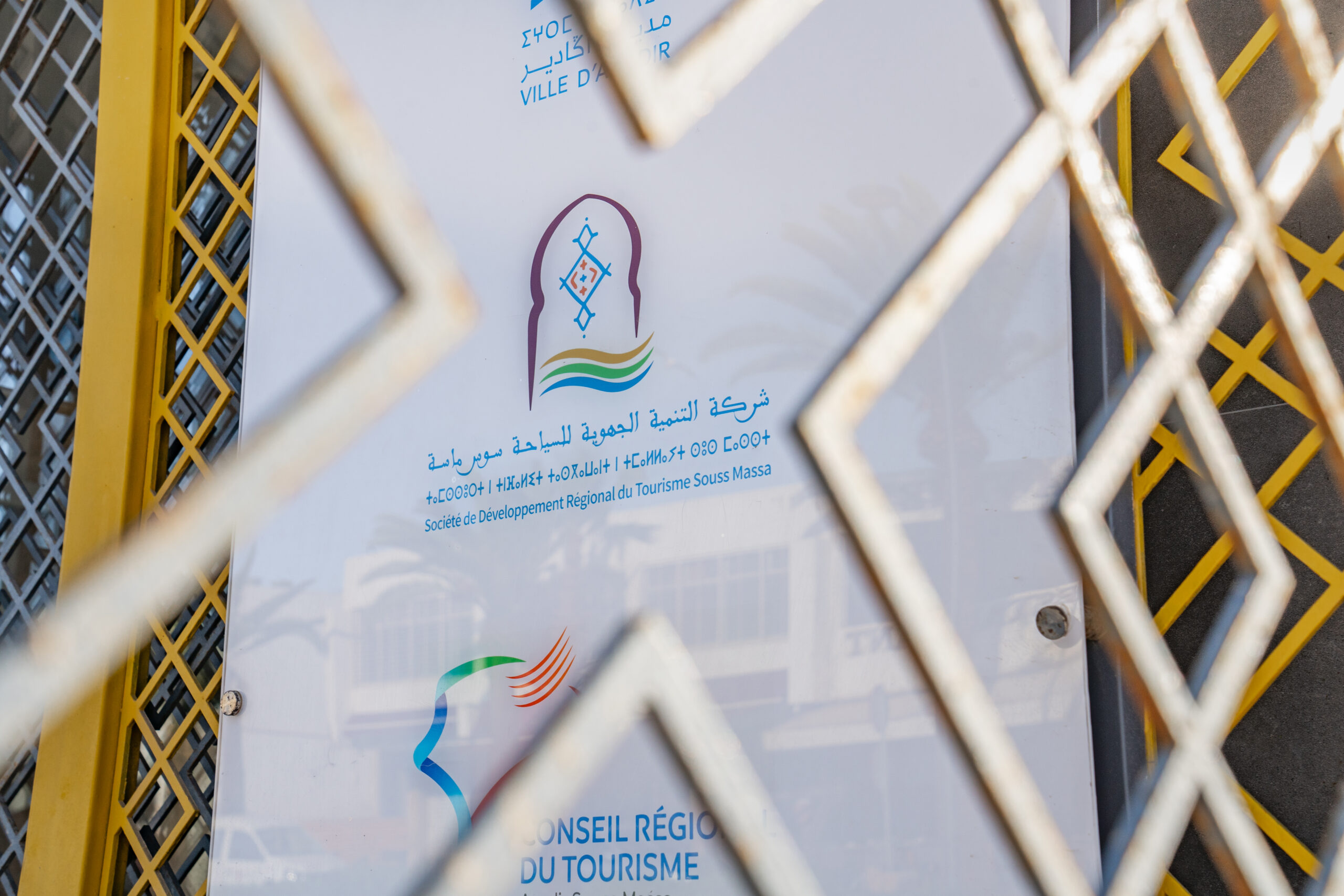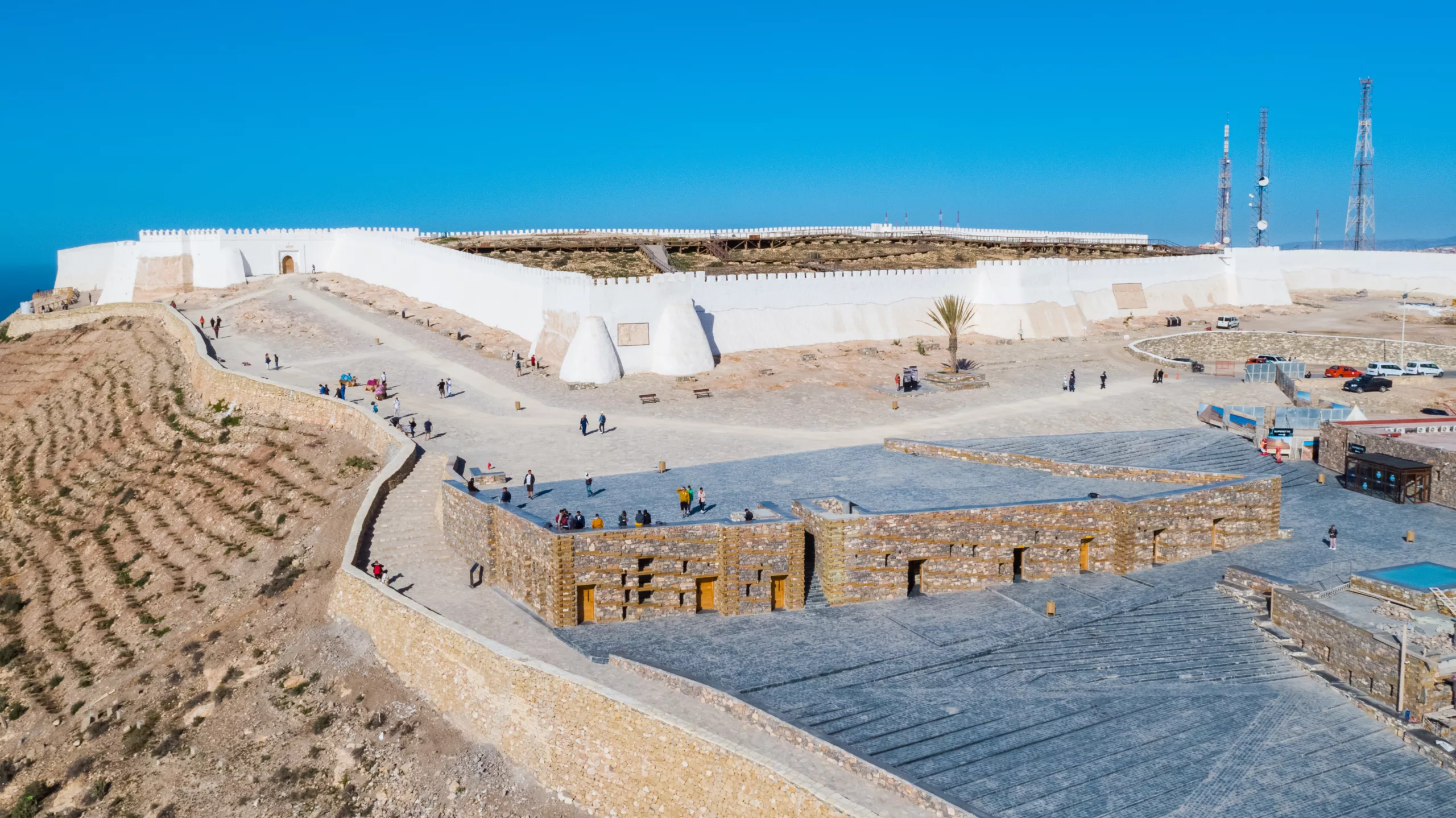
Heritage Development of the Kasbah of Agadir Oufella
Recognized as one of Morocco’s most significant heritage sites and situated on the heights of Agadir, the Kasbah of Agadir Oufella offers panoramic views of the city and its coastline, revealing the site’s historical value. The ruins of this once-thriving economic and cultural center have undergone extensive rehabilitation and development as part of the Agadir Urban Development Program (PDU 2020-2024).
A technical committee consisting of numerous institutional partners, such as the Wilaya, Souss-Massa Region, the municipality of Agadir, the Directorate of Culture, the Urban Agency, and civil society, have supervised the Kasbah restoration project. The SDRT Souss-Massa has been delegated with the project owner for this major undertaking, which has received a 120 million dirhams funding from various institutional partners.
A multidisciplinary team of architects, Moroccan and Spanish archaeologists, engineers, landscapers, and other specialists have been engaged to execute this large-scale project. Additionally, key elements of the site, including the ramparts and the main entrance, have been meticulously restored to preserve their authenticity.
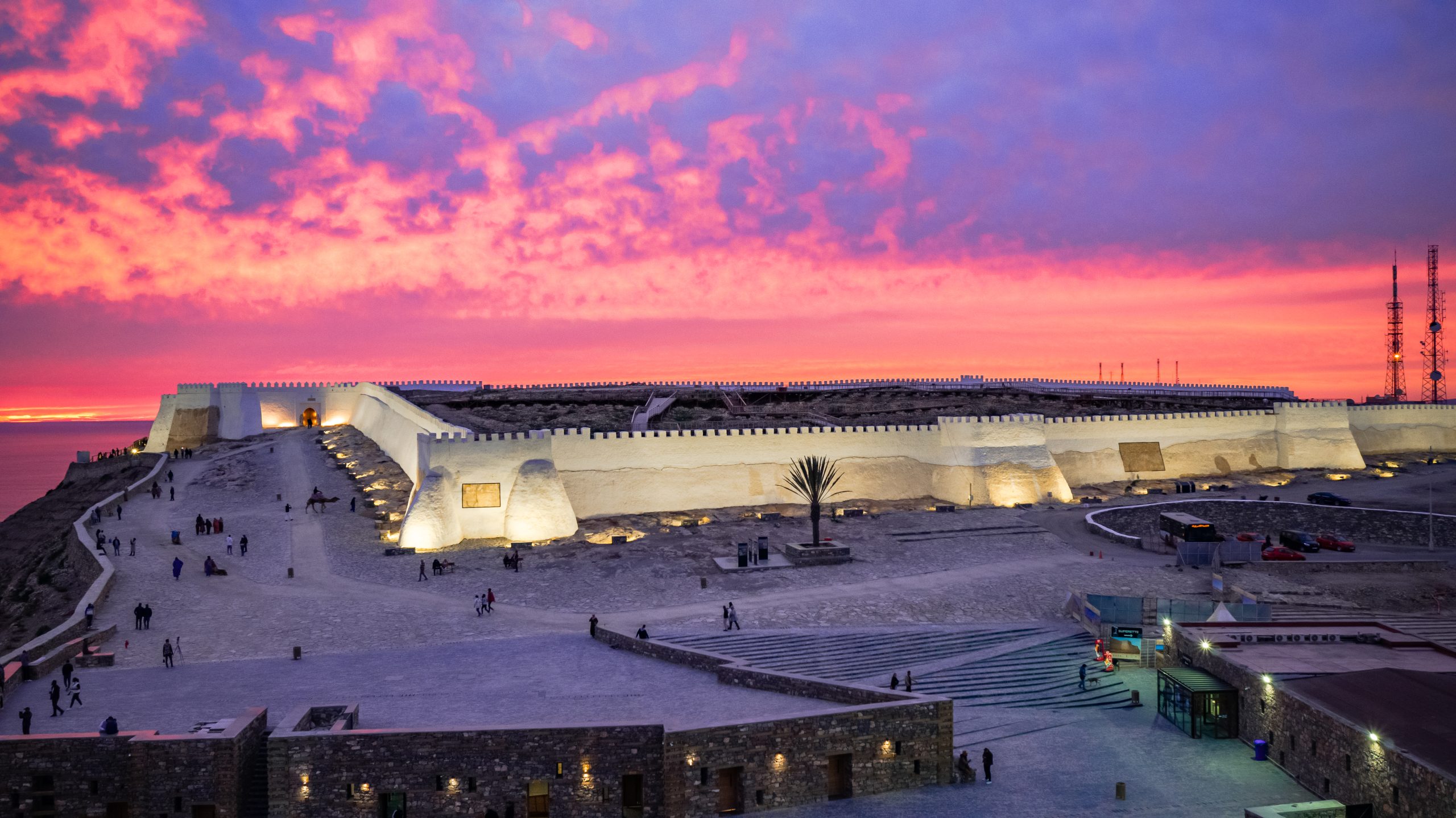
Project Stages:
Archaeological Excavations:
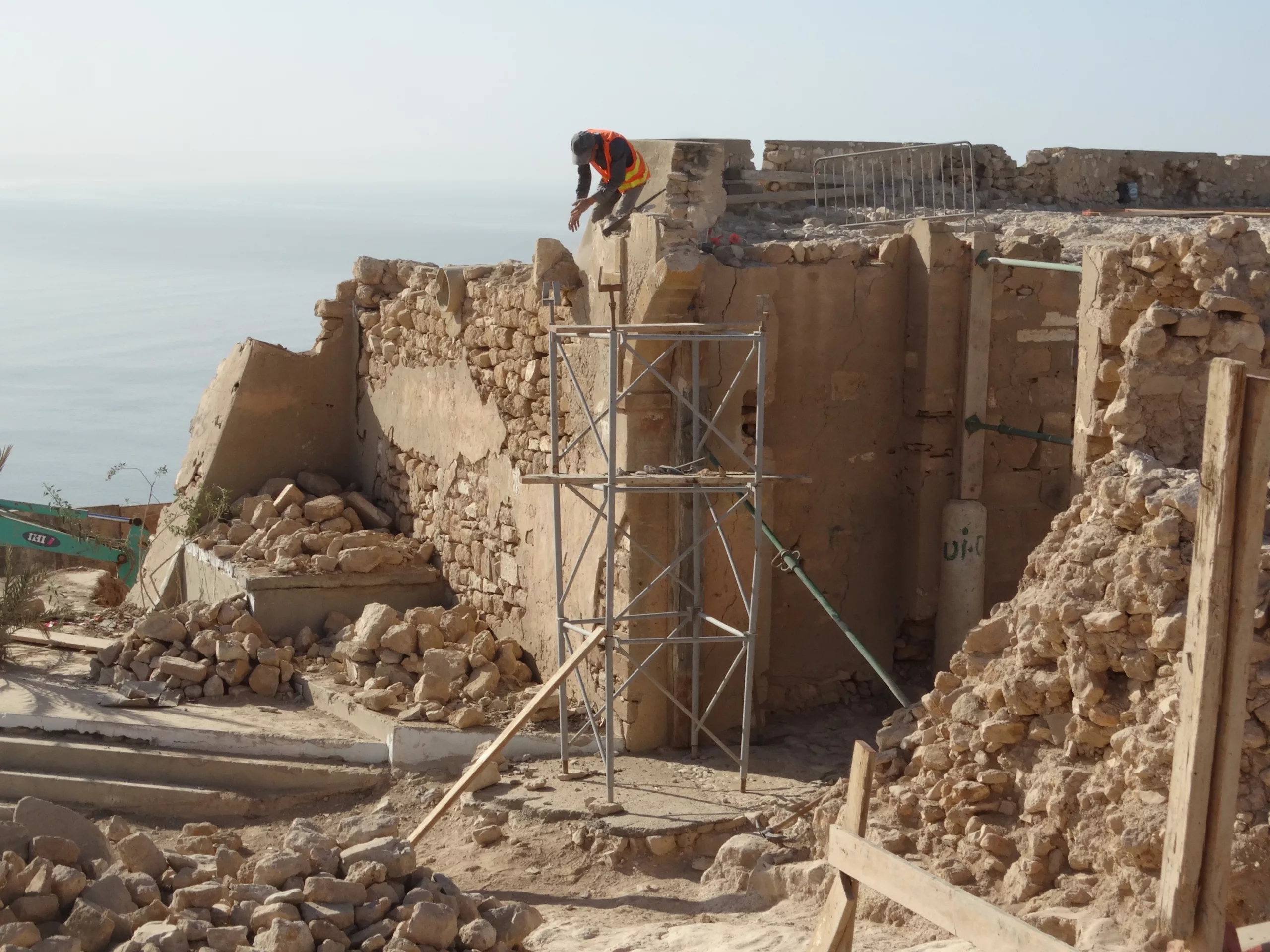
The rehabilitation of the Agadir Oufella site employed a rigorous approach integrating architecture and archaeology. Following several years of preliminary studies, including the analysis of historical pictures and detailed surveys, a set of restoration proposals has been formulated. These proposals were subsequently validated through archaeological data obtained from extensive stratigraphic excavations conducted within and around the Kasbah. This work enabled the reconstruction of the fortress’s construction history over several centuries, ensuring a restoration that faithfully respects the heritage. Archaeological findings not only confirmed initial hypotheses but also guided architectural decisions, ensuring the intervention remains consistent with the site’s authenticity.
The Ramparts
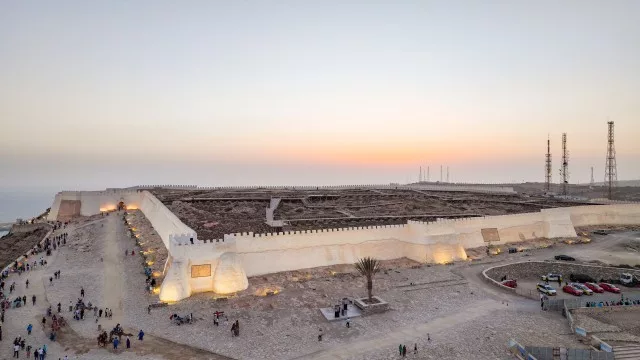
As part of the initiative to designate the Kasbah of Agadir Oufella as a heritage site, the decision was made to restore the iconic silhouette of the Kasbah by reconstructing the ramparts to mirror their state in 1960, with particular emphasis on the facades facing the city and the sea, which were deemed most complex. The East and South walls, which partially survived the earthquake, have undergone various interventions over the years, including multiple restorations. Following a thorough archaeological assessment, work commenced after complete stripping and a detailed survey of the existing structures, creating a baseline for the restoration of the site. Historical archives aided in identifying the walls that withstood the earthquake, highlighting a construction quality that ensured their durability against adverse weather and the passage of time.
Restoration of the East Wall
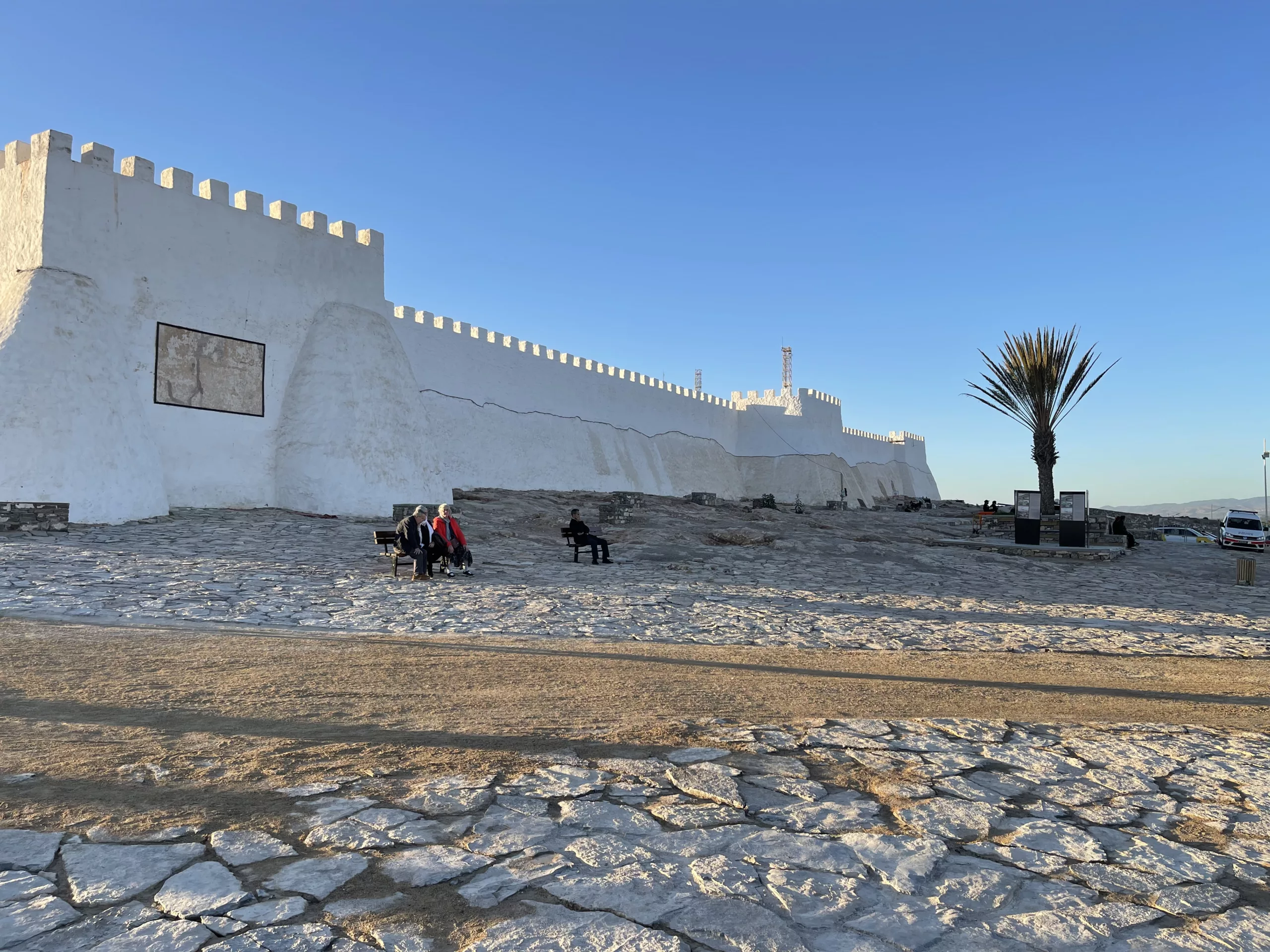
To ensure a precise restoration of the East Wall, a comprehensive analysis of the original materials, architectural features, and historical data was conducted. Preliminary archaeological excavations enabled the tracing of the rampart’s evolution from the bedrock to more recent strata, thus uncovering valuable insights into historical construction techniques and lifestyles. Consequently, a visual distinction was implemented on the façade to differentiate between the original sections that withstood the earthquake and the elements reconstructed during the heritage project (2020-2024), marked by a distinct line.
Rehabilitation of the South Wall
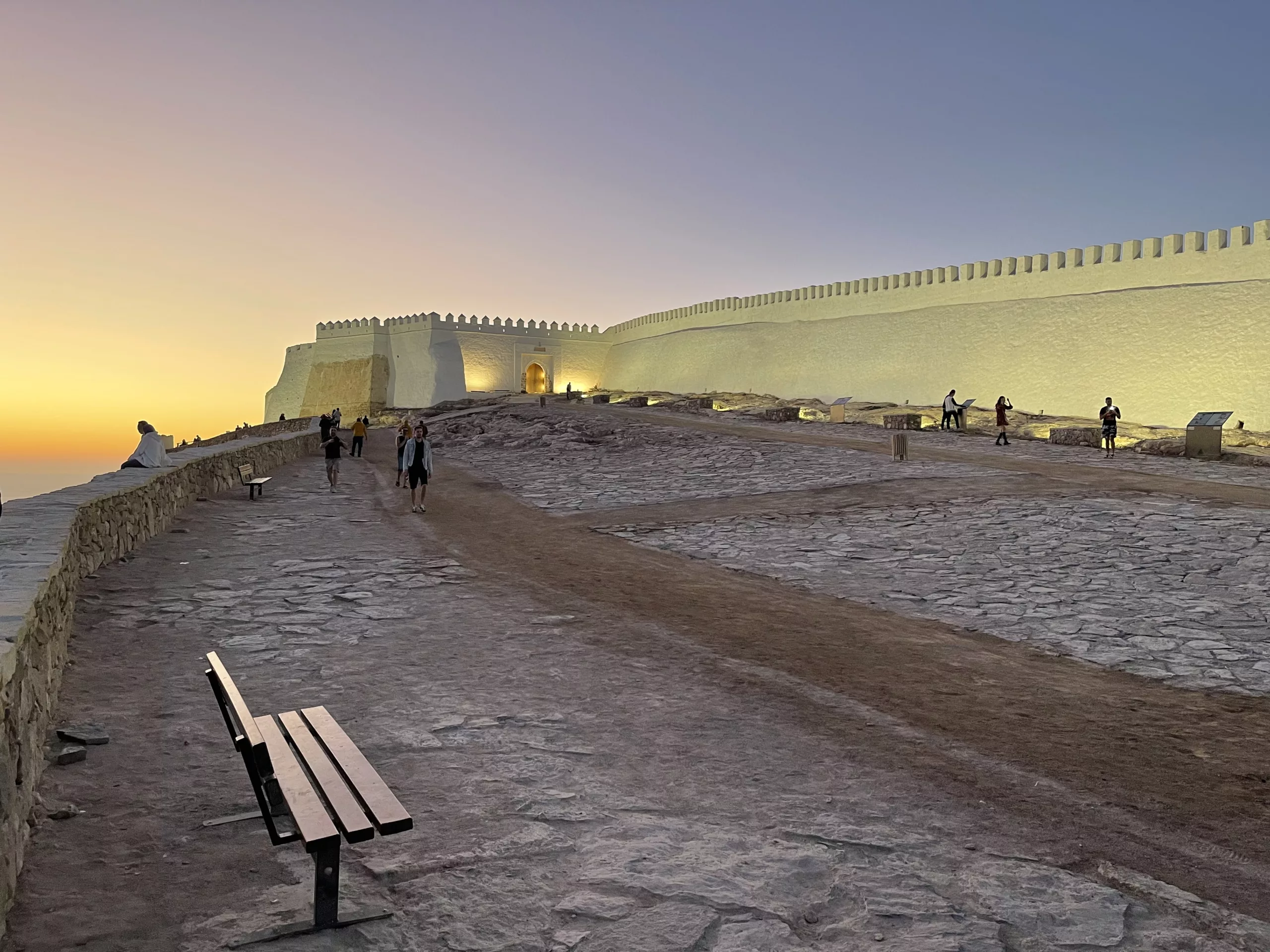
At the close of the 90’s, a total reconstruction of the South Wall was executed, integrating original rammed earth elements with a reinforced concrete structure and facing stones. While this intervention was essential, it compromised aspects of the monument’s authenticity. In the recent rehabilitation (2020-2024), a heritage-sensitive approach was adopted, utilizing a well-preserved archaeological segment to restore the wall to its original configuration while reinforcing weakened sections. Consequently, following the removal of exogenous materials, particularly concrete, the wall was reconstructed following its original texture, in rammed earth, supported by stone.
The South East Lookout
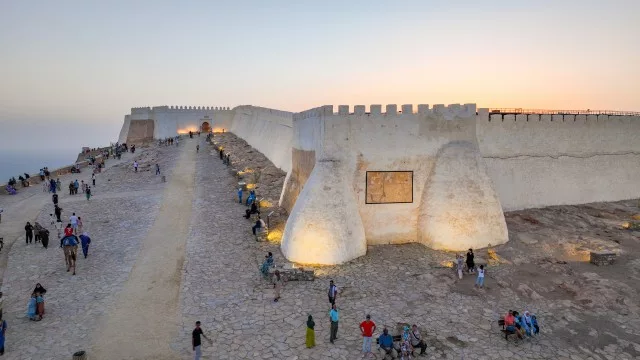
The foundations of the southern lookout, constructed from bastioned and robust rammed earth, remained intact following the 1960 earthquake and are still visible today. In 1998, the pre-existing bastion spared by the earthquake was encased within a concrete and stone sarcophagus, which was uncovered during the dismantling in 2021. During the subsequent restoration, all former coatings were preserved and enhanced to reflect the historical marks imprinted by the tumultuous past of this lookout.
Restoration of the West Wall

The restoration efforts also encompassed the West rampart and the South-West lookout. Following a meticulous assessment of the existing structure and complete stripping, these elements were restored to their original state predating the 1960 earthquake. Original materials, including stone, lime mortar, and lime coating, were prioritized to ensure an authentic restoration. Only the northern part of the West rampart, where telecommunications antennas are currently installed, remains unaddressed.
The Main Gate
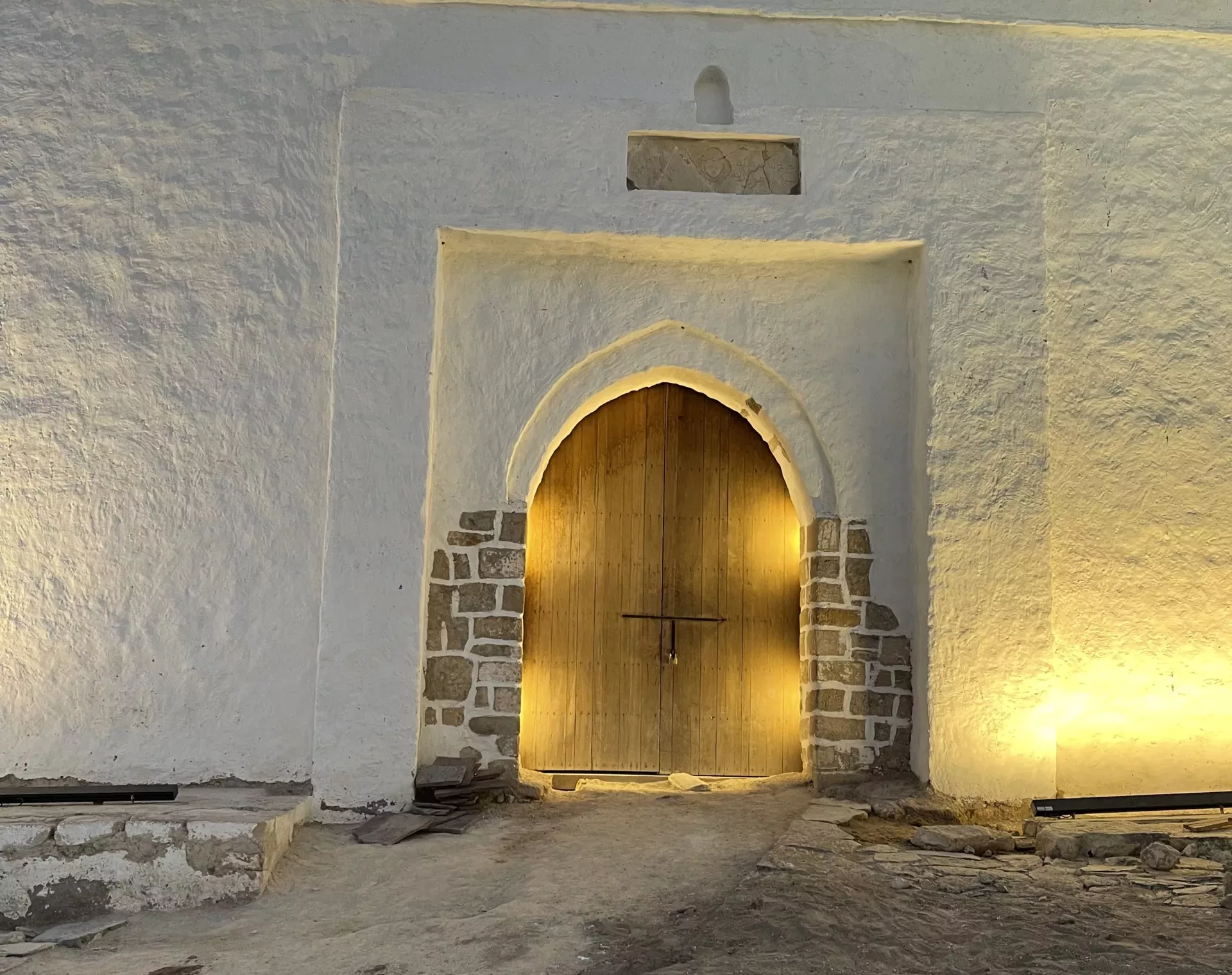
The restoration of the gate aimed to preserve its authenticity while ensuring visitor safety. Extensive research was undertaken, combining the analysis of archival documents, photographs, and plans with in situ observations and archaeological investigations. These components facilitated a precise definition of the gate’s original architectural characteristics and the selection of the most suitable materials for its restoration.
The Decking
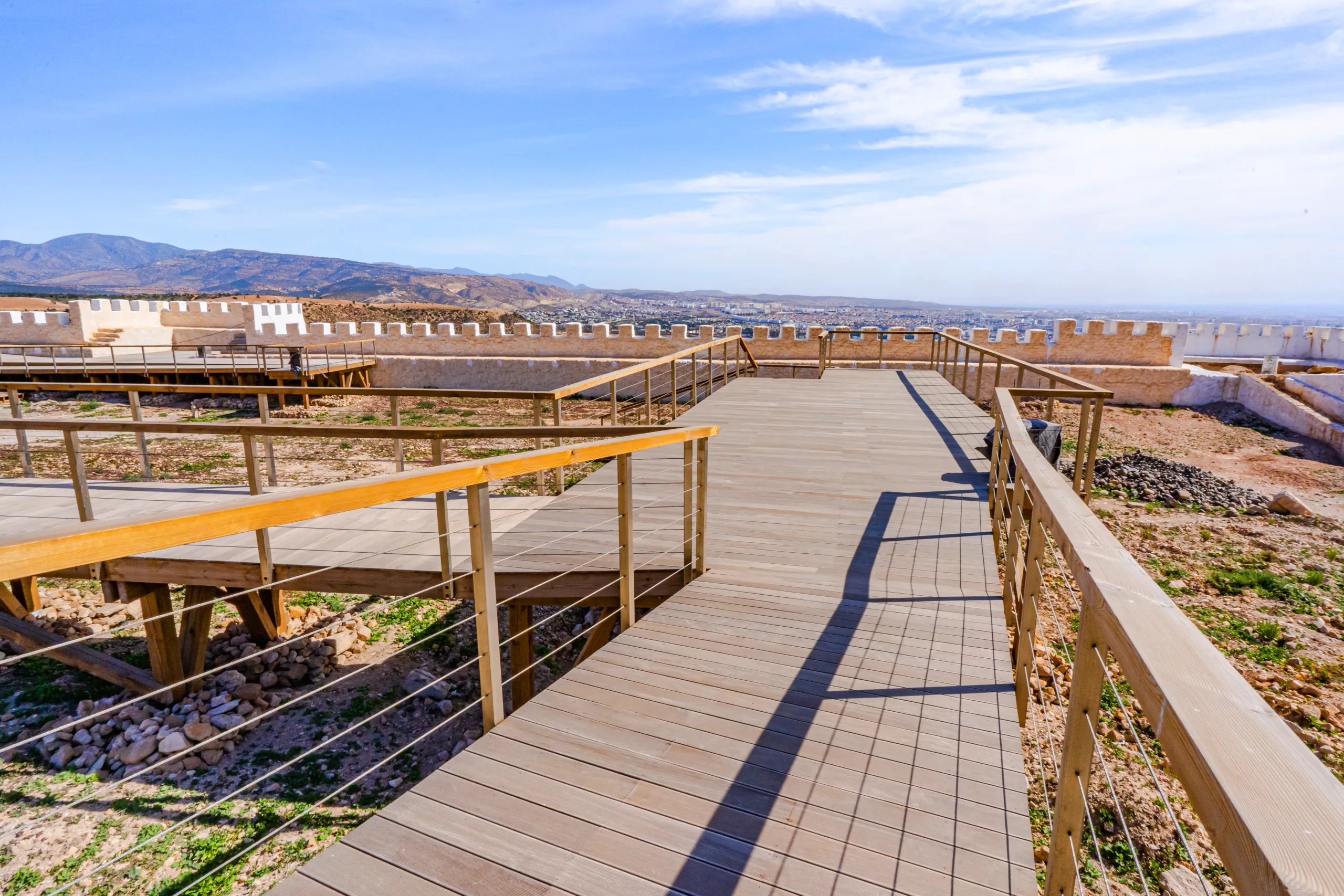
To facilitate a safe and immersive experience within the ancient city of Agadir Oufella, an extensive network of wooden walkways, constructed from IPE and class 4 Scots pine, was established over an area exceeding 4,300 m². This elevated deck, equipped with appropriate guardrails inspired by historical records, follows the original layout of the streets and squares prior to the 1960 earthquake. This initiative received support via a fatwa from the Higher Council of Ulemas on 28 Moharrem 1442 in Rabat (September 16, 2020), aimed at reconciling the preservation of historical heritage with the respect owed to the earthquake victims, whose graves may be located on-site.
The Kasbah service platforms
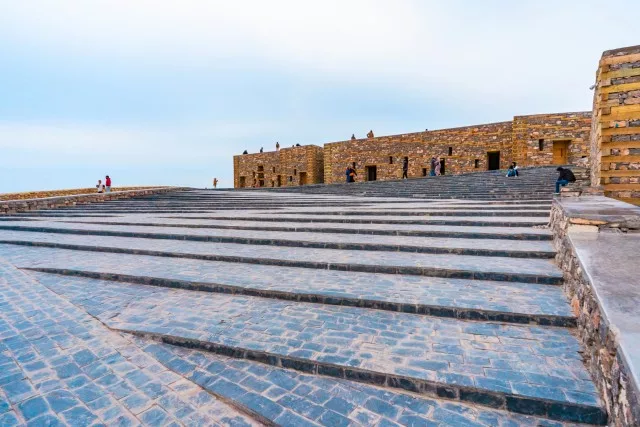
The Agadir Oufella service platform, discreetly situated beneath the Kasbah, provides a functional and environmentally sustainable reception. Constructed with natural materials such as stone and wood, it seamlessly integrates into the landscape, ensuring the durability of the infrastructure. Traditional construction methods, including dry stone masonry and wooden assemblies, ensure harmonious integration and resilience against earthquakes. Accessibility considerations are prominently addressed, with facilities designed to accommodate individuals with reduced mobility..
The reception area at the Agadir Oufella site comprises two service platforms. The first, positioned at the summit of the hill, spans almost 6,000 m² and offers a comprehensive range of services, including catering, ticketing, and restroom facilities. The second platform, located at the base of the hill, serves as the principal reception point.
Additionally, a 2,280 m² rear base supports the site’s functionality, housing a first aid station, administrative and technical offices, as well as a parking area
Illumination of Agadir Oufella
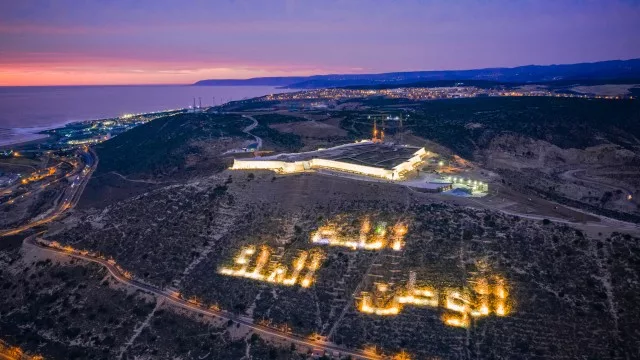
The external illumination of the Kasbah accentuates its architecture during the night. This lighting enhances the fortifications’ volumes, creating a dynamic interplay of shadows and light that reveals the enclosure’s strength. Furthermore, the platform above, along with the roadway ascending from the city to the Kasbah, is illuminated, facilitating a clear and striking visual interpretation of the structure from the city.
Exterior landscaping

In conjunction with the facility development, efforts have been made to incorporate the planting of native and endemic species, alongside the creation of a walking trail approximately 2.8 km in length, linking the upper and lower platforms. This trail includes rest areas, sports equipment, and a children’s playground, as well as erosion control measures.
Tourist signage
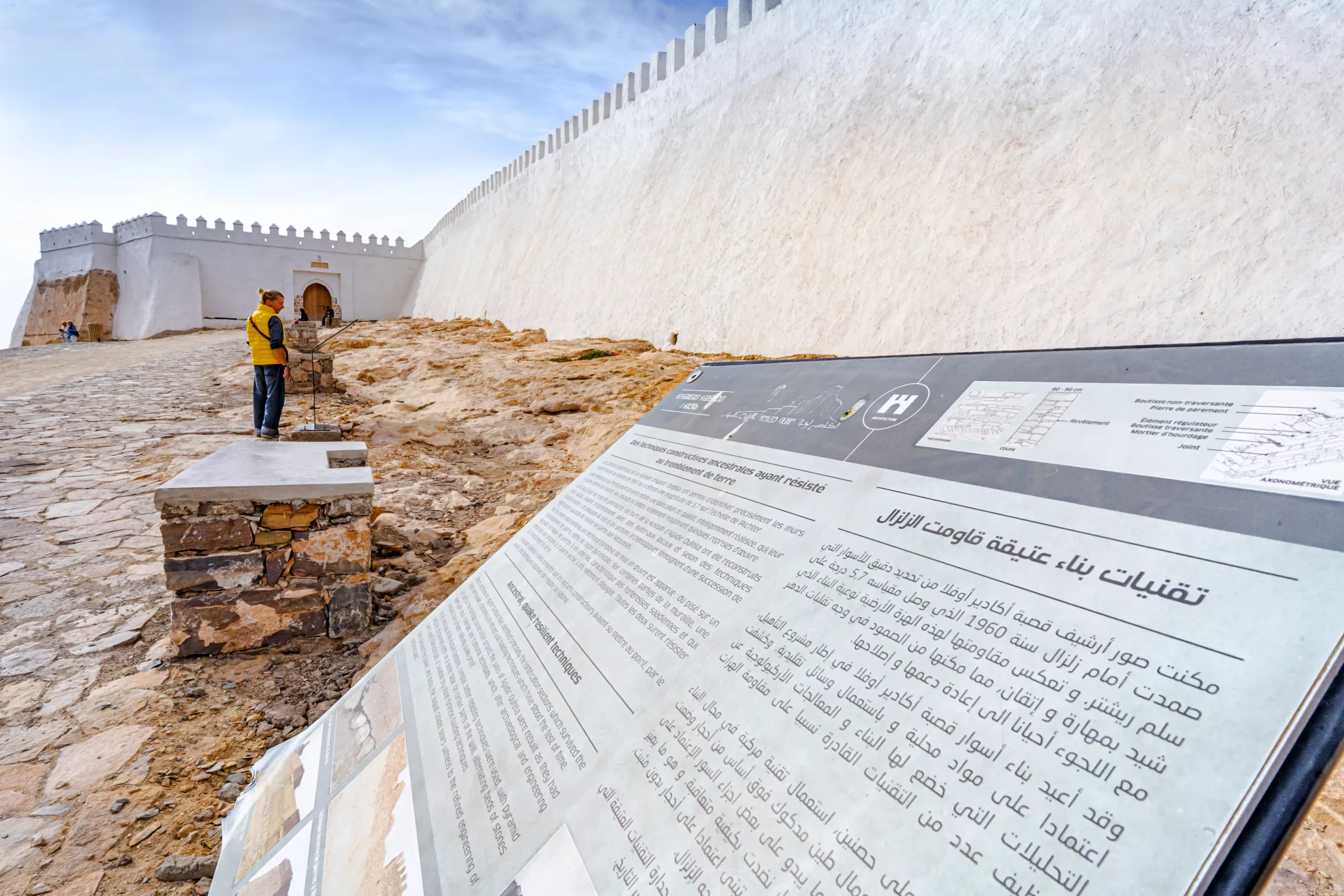
Regarding signage, interpretive panels have been installed both outside and within the Kasbah to enhance visitors’ understanding of its history. These panels, available in three languages (Arabic, French, and English), are produced in collaboration with historians and local experts.
The visual identity of the Kasbah
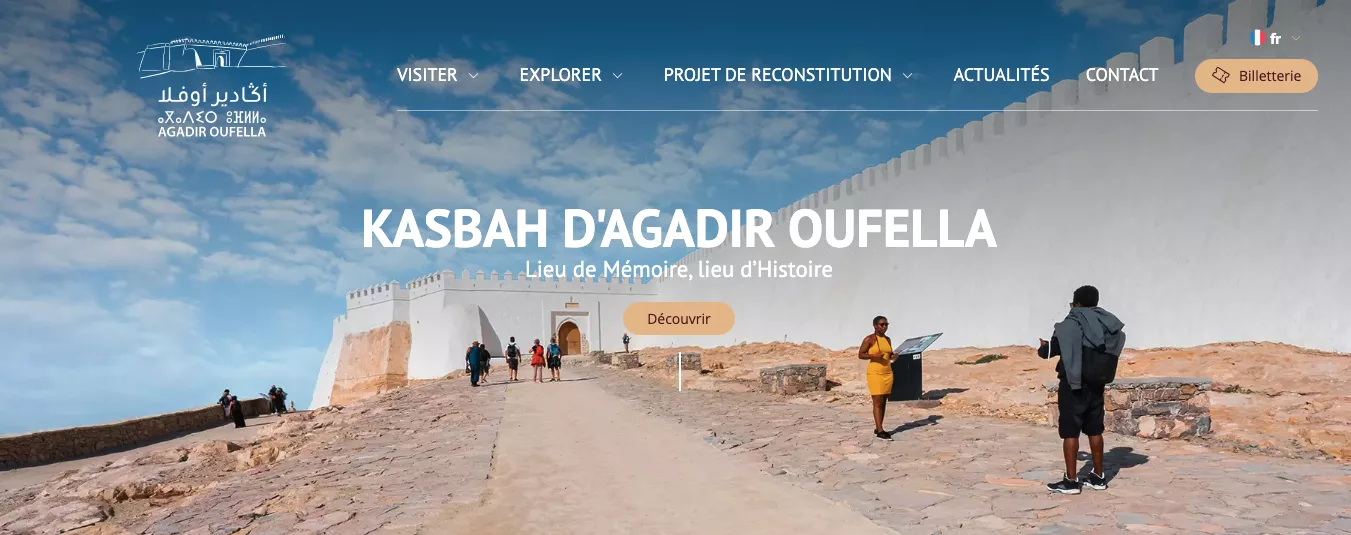
A distinctive visual identity has been established for the Kasbah, featuring a graphic charter and logo that reflect its historical and cultural significance. A website, www.agadir-oufella.ma, and a mobile application have been developed to provide comprehensive information about the Kasbah and facilitate online booking for visits, including the option for virtual audio guides.
Opening of the Intra-muros part

The Kasbah of Agadir Oufella was officially opened to the public for visits to the intra-muros area on February 3, 2024. The site now offers a variety of services designed to enrich the visitor experience, in addition to the self-guided tour. These services include guided tours led by cultural mediators, providing an in-depth understanding of the site’s history and significance. Furthermore, audio guides are available in five languages (Arabic, Tachelhit, French, English, and Spanish), enabling independent exploration while receiving detailed information. Visitors can purchase these services directly from the on-site ticket office, thus offering flexibility in any mode of visit they choose.

